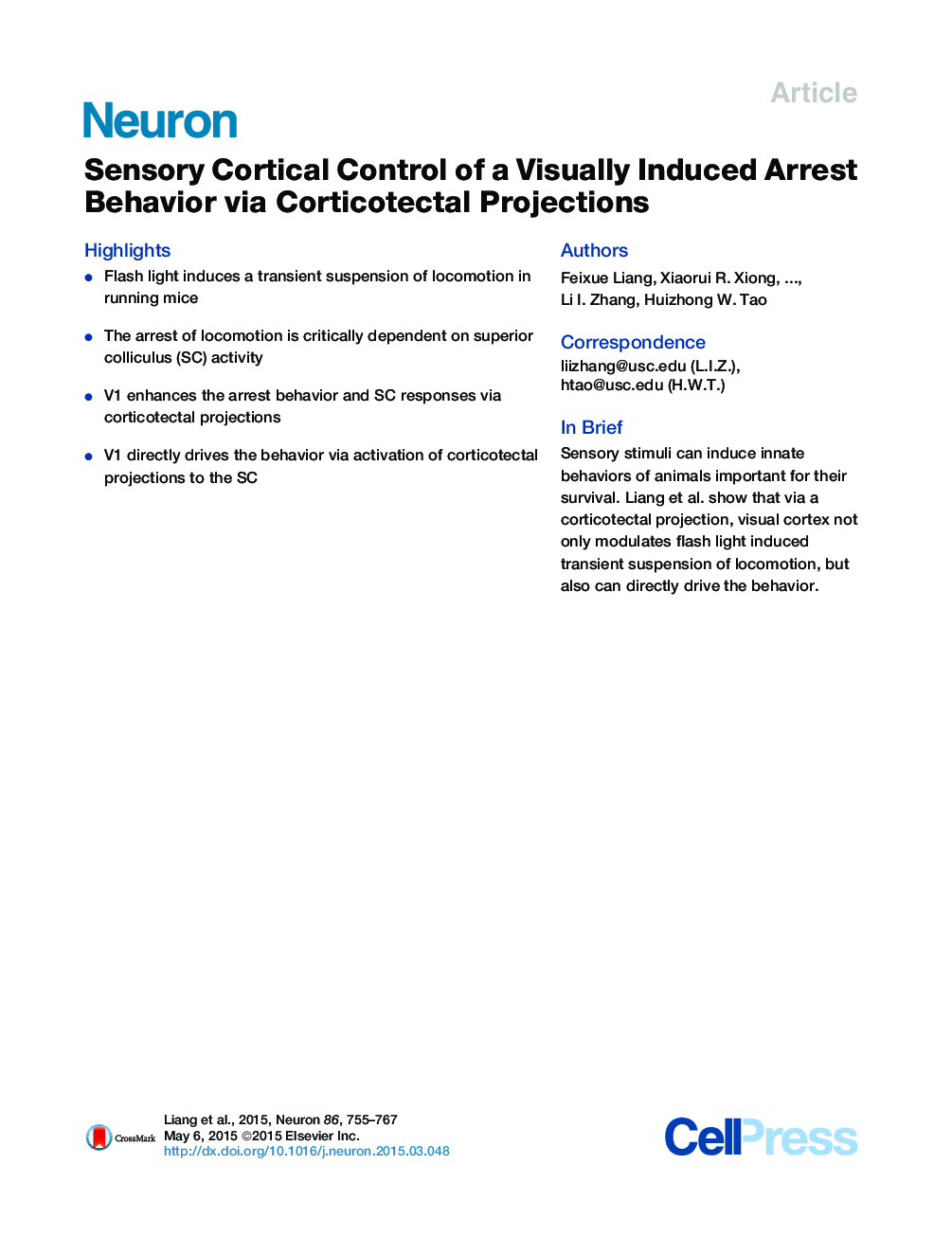| Article ID | Journal | Published Year | Pages | File Type |
|---|---|---|---|---|
| 4320936 | Neuron | 2015 | 13 Pages |
•Flash light induces a transient suspension of locomotion in running mice•The arrest of locomotion is critically dependent on superior colliculus (SC) activity•V1 enhances the arrest behavior and SC responses via corticotectal projections•V1 directly drives the behavior via activation of corticotectal projections to the SC
SummaryInnate defense behaviors (IDBs) evoked by threatening sensory stimuli are essential for animal survival. Although subcortical circuits are implicated in IDBs, it remains largely unclear whether sensory cortex modulates IDBs and what the underlying neural pathways are. Here, we show that optogenetic silencing of corticotectal projections from layer 5 (L5) of the mouse primary visual cortex (V1) to the superior colliculus (SC) significantly reduces an SC-dependent innate behavior (i.e., temporary suspension of locomotion upon a sudden flash of light as short as milliseconds). Surprisingly, optogenetic activation of SC-projecting neurons in V1 or their axon terminals in SC sufficiently elicits the behavior, in contrast to other major L5 corticofugal projections. Thus, via the same corticofugal projection, visual cortex not only modulates the light-induced arrest behavior, but also can directly drive the behavior. Our results suggest that sensory cortex may play a previously unrecognized role in the top-down initiation of sensory-motor behaviors.
